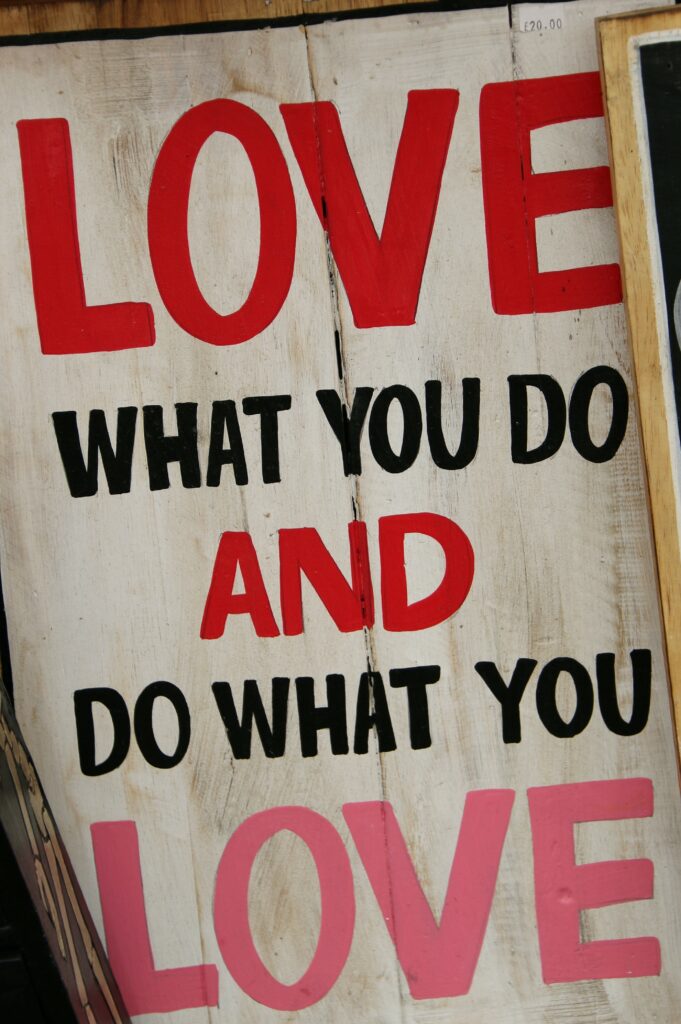The 2021 Big Quit: Part One
 The Great Resignation. The 2021 Turnover Tsunami. The Big Quit. Whatever you want to call it, many workers — both blue and white-collar– are leaving, or seriously considering leaving their jobs. It’s happening in every sector; some sectors have already suffered a mass exodus. I believe that some of this churn is because so many people have been forced to re-evaluate many other important things during the pandemic, and work got thrown into that same cycle of rethinking.
The Great Resignation. The 2021 Turnover Tsunami. The Big Quit. Whatever you want to call it, many workers — both blue and white-collar– are leaving, or seriously considering leaving their jobs. It’s happening in every sector; some sectors have already suffered a mass exodus. I believe that some of this churn is because so many people have been forced to re-evaluate many other important things during the pandemic, and work got thrown into that same cycle of rethinking.
Now, in fairness, the “quit rate” has been steadily increasing over the last decade, but the uncertainty of the first wave of the pandemic brought on a massive dip in the number of job-quitters in April 2020. However, this has been followed by a massive spike in turnover a year later in Spring/Summer 2021.
We’re seeing an employee-driven job market right now. People are feeling empowered and ready to leave for more money, better benefits, and/or better flexibility and work/life balance.
As companies start to plan a return to the workplace, those who are used to working from home are asking “Why?” Although it is counterintuitive, with more and more workplaces anticipating a return to the office, employee turnover is expected to rise even higher. Pandemic retention has become tricky.
Employees who are part of underrepresented groups are also seeking workplaces where they feel more welcome.
Are your employees quitting?
Depending on the profession, losing an employee can cost tens of thousands of dollars. If you’re losing multiple employees, you could be looking at costs well over $100,000. The costs of identifying, interviewing and onboarding new candidates, combined with the cost of lost productivity will be a big financial hit. According to a study published by the Society for Human Resource Management, losing a single employee can cost you six to nine months of your former employee’s salary to identify and onboard their replacement.
 Most people don’t quit their jobs on a whim. There are likely significant reasons why people are leaving your organization. It takes a lot to decide to start to look elsewhere, submit applications and attend interviews, and it takes even more to accept an offer. Employees will remain with a company through all kinds of challenges and difficulties until something finally forces them to leave. A decision to leave isn’t made lightly.
Most people don’t quit their jobs on a whim. There are likely significant reasons why people are leaving your organization. It takes a lot to decide to start to look elsewhere, submit applications and attend interviews, and it takes even more to accept an offer. Employees will remain with a company through all kinds of challenges and difficulties until something finally forces them to leave. A decision to leave isn’t made lightly.
A common reason someone leaves a job is that they’re not getting the career fulfillment and development they want. Now more than ever, it’s worth ensuring that you’re taking the time to assess your employees’ development. Are you offering them genuine opportunities to learn and develop on the job, access training, mentorship, and offering real opportunities for career development and progression?
What Got You Here, Won’t Get You There
Conventional solutions from the past probably won’t solve your current hiring and pandemic retention challenges. It’s time to revisit your assumptions. Instead of focusing on your past practices or other cookie-cutter solutions, ask the right questions to get the right answers for your organization.
Most people have unconscious biases that predispose them to favour people who look like them. One implication of this is that people who are in positions of power tend to look, sound, and think in similar ways.
It’s still harder for women—and for women of colour in particular—to establish networks that can help them navigate their careers in predominantly white and/or male industries and organizations.
But the data is showing more and more that today’s most successful and impactful companies are also the most diverse.
 In the same vein, many hiring managers and business owners are preoccupied with “Hiring for Best Fit” and preferring employees who they feel are a good match for the existing organizational culture. They place too much emphasis on hiring people who should be able to blend right in, relying too much on their gut instinct. This leads to a very quick, superficial—and if we’re being honest, a lazy—hiring process. In my opinion, the better strategy is to hire someone who can best contribute high-quality work.
In the same vein, many hiring managers and business owners are preoccupied with “Hiring for Best Fit” and preferring employees who they feel are a good match for the existing organizational culture. They place too much emphasis on hiring people who should be able to blend right in, relying too much on their gut instinct. This leads to a very quick, superficial—and if we’re being honest, a lazy—hiring process. In my opinion, the better strategy is to hire someone who can best contribute high-quality work.
 Likewise, if you have a reputation for “hiring for best fit”, and an inequitable pattern of promoting employees, you’re also likely repelling highly qualified, talented candidates who feel they don’t (and can never) fit the mold, and won’t bother giving your organization serious consideration.
Likewise, if you have a reputation for “hiring for best fit”, and an inequitable pattern of promoting employees, you’re also likely repelling highly qualified, talented candidates who feel they don’t (and can never) fit the mold, and won’t bother giving your organization serious consideration.
With pandemic retention becoming more and more challenging, the time has come for leaders to be honest about their company culture.
Check back soon for Part Two of this blog.
Are you ready to go beyond writing a Diversity Statement, setting up a Diversity and Inclusion Committee, or offering some basic training to your workforce? Are you an employee who is seeking a more inclusive workplace? Dr. Helen’s training in Work and Business Psychology (officially known as Industrial and Organizational (I/O) Psychology) means she is a genuine expert in evaluating work-related behaviours. She uses those skills to help hiring managers tell the difference between people who say the right things during interviews and people who actually deliver on the job. Plus, she knows how to do it inclusively.
Reach out today for a free and confidential initial consultation by phone, email, or via direct message on Twitter, Facebook or LinkedIn.
More than career coaching, it’s career psychology®.
I/O Advisory Services Inc. – Building Resilient Careers and Organizations.™




